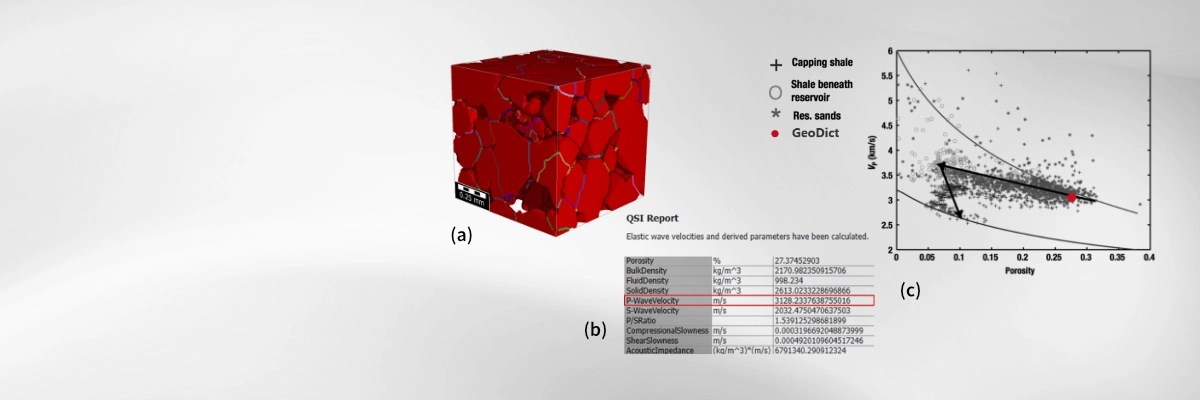Advanced Quantitative Analysis of Seismic Parameters for Subsurface Characterization
GeoApp: Quantitative Seismic Interpretation (QSI)
Accurate knowledge of rock elastic properties is fundamental for dependable subsurface characterization in geophysical and reservoir engineering workflows.
Elastic parameters are the foundation of robust reservoir interpretation
Parameters such as P-wave and S-wave velocities, compressional slowness, and acoustic impedance are central to seismic interpretation. They enable geoscientists to assess lithology, identify fluid types, and track changes in reservoir conditions over time. Because these properties respond strongly to fluid saturation, the presence of oil, gas, brine, or CO₂ within the pore space can significantly influence a rock’s elastic behavior and its resulting seismic signature.
A detailed understanding of how seismic velocities shift with varying fluid mixtures or saturation levels is essential for modern reservoir applications, including time-lapse (4D) seismic monitoring, carbon capture and storage (CCS), and enhanced oil recovery (EOR).
Physics-based simulation instead of approximation
To overcome the limitations of empirical approaches, we apply a fully physics-based, high-resolution approach grounded in real rock microstructures. It begins with micro-computed tomography (µCT) scans of actual rock samples, which are then segmented to clearly separate the mineral matrix, pore space, and fluid phases.
Unlike traditional approaches that depend on simplified rock models or empirical approximations, we apply direct numerical simulations (DNS) on fully segmented 3D structures. These simulations allow us to compute elastic and acoustic properties, including P- and S-wave velocities, compressional slowness, and acoustic impedance with high fidelity and true physical accuracy.
- Use of real rock structures: Operates directly with high-resolution micro-CT scans of actual rock samples. No idealized or simplified geometries are used.
- Direct Numerical Simulations (DNS): Executes physics-based simulations directly on the segmented 3D rock structure to accurately compute elastic and acoustic properties.
- Customizable solver settings: Allows users to specify key simulation parameters, including boundary conditions and the computational direction (wave propagation axis).
- Adjustable grain contact stiffness: Lets users define the mechanical stiffness between grains, ranging from loose to tight to fully cemented, with any intermediate states possible.
- Simulations at one or multiple fluid saturations: Supports fluid configurations such as brine, oil, gas, or CO₂, enabling single-saturation cases or multi-scenario comparisons.

